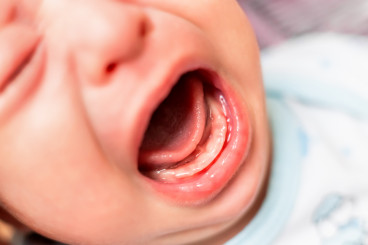Enamel
A Mohs hardness of 5 makes it highly resistant to wear and tear, allowing teeth to withstand the immense forces and abrasion they experience during chewing and grinding.
Detailed Explanation of Enamel
Enamel is primarily composed of hydroxyapatite, a crystalline calcium phosphate mineral. This mineral structure gives enamel its incredible strength and durability. The enamel layer covers the entire visible portion of the tooth, known as the crown, and it plays a crucial role in protecting the more vulnerable inner structures of the tooth.
In its natural state, enamel has a slightly translucent, bluish-white appearance. The opacity and color of enamel can be influenced by factors such as the thickness of the enamel layer, the underlying dentin (the second layer of the tooth), and the presence of certain minerals and pigments. Enamel's translucency allows the natural color of the dentin to show through, contributing to the overall aesthetic of the tooth.
One of the remarkable properties of enamel is its ability to self-repair to a certain extent. Enamel does not contain any living cells, unlike other tissues in the body. However, it can undergo a process called remineralization, where minerals from saliva and other sources are deposited back into the enamel structure, helping to strengthen and repair minor defects or wear.
Functions of Enamel
The enamel layer serves several critical functions:
Protection: Enamel shields the underlying, more sensitive dentin and pulp (the innermost layer of the tooth containing nerves and blood vessels) from external factors such as temperature changes, acidic foods and beverages, and abrasive forces encountered during chewing.
Aesthetics: The smooth, glossy surface of enamel contributes to the overall attractive appearance of the teeth, which is an important aspect of a healthy, confident smile.
Functionality: The hardness and durability of enamel enable teeth to withstand the significant forces and wear and tear associated with chewing and grinding food.
Reasons for Enamel to become eroded
While enamel is an incredibly resilient structure, it is not indestructible. Over time, enamel can become worn down, chipped, or even eroded due to various factors, such as:
Acidic Exposure: Consumption of acidic foods and beverages, as well as certain medical conditions that increase stomach acid reflux, can gradually wear away the enamel.
Improper Oral Hygiene: Inadequate brushing, flossing, and use of fluoride-containing products can allow plaque and tartar to build up, leading to enamel erosion and the development of cavities.
Bruxism: Habitual clenching or grinding of the teeth, known as bruxism, can cause excessive wear and tear on the enamel over time.
Trauma: Physical injury to the mouth, such as a fall or sports-related accident, can chip or crack the enamel.
When enamel becomes compromised, it can expose the underlying dentin, leading to increased sensitivity, a higher risk of decay, and potentially more extensive dental treatments. Therefore, it is crucial to maintain proper oral hygiene and seek regular dental checkups to monitor the health of the enamel and address any issues promptly
Conclusion
In summary, enamel is the remarkably strong and resilient outer layer of the tooth that plays a vital role in protecting the inner structures, maintaining the tooth's aesthetic appearance, and enabling proper chewing and grinding function. Understanding the unique properties and vulnerabilities of enamel is essential for maintaining long-term oral health and preventing dental problems.
Protect your tooth enamel with the help of Dr. BestPrice's dental auction platform. Find affordable, high-quality dental services today!



